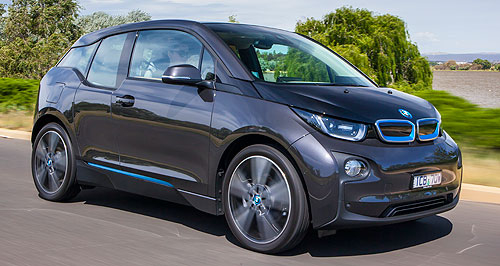Make / Model Search
News - General News - SafetyFourteen new car recalls issued in two weeksNot Imprezive: Current-gen Subaru Impreza models are being recalled over a potential fault in the reversing camera. Airbag, electrical and mechanical defects top latest new car recall list13 Mar 2017 NEW-CAR manufacturers have submitted fourteen separate voluntary recalls within a two-week period, for various issues ranging from electrical glitches to mechanical and safety defects on vehicles up to 15 years old. The Volkswagen Group issued four recalls, the most wide-ranging of which concerns MY08 and MY09 Skoda Octavia models, and MY09 and MY10 Volkswagen Golf, Jetta, Eos, Scirocco and Caddy models of “certain” VIN numbers. According to the maker, a thermal overload issue with the ABS control unit can stop functioning correctly, leading a dashboard warning light to illuminate and leaving the driver without the ABS function. Newer MY16 and MY17 Golf models have also been recalled for tyre placard labels that show specifications for the wrong type of wheel fitted, the pressure recommendations of which might affect handling and safety if followed. Audi has also recalled certain MY17 versions of its A4, A6, A7 and A8 for “irregularities in the mix ratio of the igniting agent” in its airbags and seatbelt pretensioners, which leaves them with the potential to not trigger during an accident. A similar issue has affected Jaguar, specifically with MY17 and MY18 F-Types and MY17 XEs. It has also cited “a deviation in the seatbelt initiator generant mix ratio in some initiators” of the airbag and seatbelt pretensioner modules. A non-Takata airbag-related issue has cropped up with among the oldest vehicles on the latest recall list, for Toyota Corollas built between 5 March 2003 and 20 October 2005. According to the recall the driver’s airbag unit was “assembled with propellant wagers that are subject to density reduction, caused by repeated volume change, which occurs after prolonged exposure to high temperatures.” It could cause the inflator to rupture during deployment, reducing its efficacy. Meanwhile, the passenger airbags of certain Nissan N16 Pulsar and Y61 Patrol models could allow entry of moisture to enter the inflators, potentially causing abnormal deployment “or metal fragment scatter”. Other electrical-related recalls include the latest Mercedes-Benz E-Class built between 1 April 2016 and 31 August 2016. According to its maker, the wiring harness for the windscreen wiper motor has not been “routed correctly” with the potential to become damaged and cause the wiper motor to fail. Subaru has also warned that all current-generation Impreza models could suffer from a freeze of the reverse-view camera, which would show vision of the rear of the vehicle that was not a real-time display, and could cause the driver to believe nothing was behind the vehicle if something were. An incorrectly-installed wind deflector attachment for the panoramic sunroof of Hyundai LF Sonata models built between 10 July 2014 and 13 August 2015 could result in the deflector plate coming loose, with the potential to shatter the sunroof glass or present an obstacle to other road users. Another incorrectly fitted part has affected BMW i3 range-extender (REX) vehicles produced between 2 July 2014 and 28 Dec 2016, with the fuel tank ventilation line having the potential to rub against the vehicle and wear through to release fuel vapour into the atmosphere. Two mechanical defects have been noted for recall, with 5.0-litre V8 versions of the Ford Mustang made between 27 May 2015 and 1 March 2016 coming under scrutiny for a potential fire risk due to “reduced clearance” between battery cabling and the exhaust manifold that could come into contact. The company has stressed there have been no reported occurrences of the issue in Australia. Fiat has also cited a “non compliance” material used in the 2.3-litre Multijet engine of its Ducato van models produced between 19 December 2016 and 10 January 2017, which could cause the camshaft to crack and bring the vehicle to a halt while driving. In all instances manufacturers have sent warning letters to affected owners, however concerned owners can also check if their VIN number is affected at their local dealer or by checking on the website of the affected brand for details.  Read more |
Click to shareGeneral News articlesResearch General News Motor industry news |












Facebook Twitter Instagram